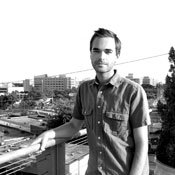The status of Jackson's decline or boom, depending on your perspective, is an ever-present source of debate and discussion among the metro area's residents. The latest U.S. Census data, however, seem to have re-ignited strong feelings of many on both sides of the proverbial fence to a level unseen for quite some time.
While I sat at my desk scanning news articles and message boards on the subject, I found myself struggling to frame my opinion in a way that bridges these divides. I'm a fervent supporter of our cities and their potential, but I also understand the concerns of those who eventually relent to the suburbs. With talking points raging on local blogs, I thought of my recent trip to Austin, Texas, for the annual South by Southwest festival, and how a few days in one of America's fastest-growing cities had helped shape my own perspective on these difficult and complex issues.
Austin is a hub for technology, culture and entertainment. Its edgy lifestyle and progressive politics are in many ways a middle finger to a state painted a deep shade of red. My interest, however, has nothing to do with political leanings or fashion, but in a quality of life that appeals to those across demographic and socioeconomic spectrums.
Attending SXSW was a chance for me to get out of my Jackson bubble for a week and visit a city that endlessly inspires those who advocate for better, more sustainable cities. As a young designer, periodically visiting cities with a more dynamic sensibility to architecture and urban planning is necessary, not only for my own sanity, but as a source of inspiration and knowledge to help guide my work as a researcher with the Jackson Community Design Center.
What I found in Austin was not simply a utopia of "hipsterdom" or progressive politics, but a glimpse into a place where residents, young and old, take pride in their town through their commitment to quality of life. It's this unique combination of big-city density and small-town community that has made Austin one of the nation's fastest-growing destinations for living, entertainment and tourism.
Attending a music festival on the scale of SXSW can seem like a job more than a vacation, but I still managed to take in all that this energetic city has to offer.
One evening as I was walking through downtown and across the Congress Avenue bridge, I felt perfectly positioned to experience all of Austin at once: the droves of young people franticly trying to get from one musical act to the next; cyclists and motorists jockeying through rush-hour traffic; and folks lounging on the riverfront parks below.
"This is how a city should feel," I thought to myself. However nostalgic or naive that statement may seem, the point remains. A city that feels active, energetic and healthy feeds itself. The identity a city creates becomes a cycle of positive or negative energy that permeates everyday life.
Spending time in Austin, one gets the sense that "quality of life" isn't simply a marketing tagline or an effect of isolated renewal projects, but rather a primary driving force of the public and private sectors of Austin. And while it's easy to criticize and blame city officials for all that ails our city, I saw firsthand in Austin it's the collective power of the people who demand action from their elected officials that make a city better, not the other way around.
The results are clear. From expansive bike routes and "pedicabs" (a large fleet of bicycle taxis sanctioned by the city), to numerous green spaces and eco-focused planning initiatives, Austin has a clear identity. The city made investments years ago in cultural and physical infrastructure that are now bearing fruit at an unprecedented scale. Visitors come from all over the world to experience the richness of Austin's culture and the energy of its nightlife.
While numerous urban-renewal projects are underway in Jackson and commendable progress has been made, we still often find ourselves in a position of "catching up" to other cities that progressed on similar issues years ago. Jackson, however, has an opportunity to seize on its potential and push forward in a way that changes the minds of those not only in our own suburbs, but the nation. A city that was once plagued with poverty, crime, and negative perceptions can become a thriving center for culture and entertainment. The stereotype of Mississippi as a backward, intellectually inhibited place ironically provides us with great potential: No one expects us to succeed.
As a volunteer helping organize the upcoming FIGMENT arts festival (May 14-15), I constantly get peppered with questions from those wanting to know how we were able to convince FIGMENT, a nationally recognized festival once only held in New York and Boston, to come to Jackson. The answer is simple: We didn't let external and internal stereotypes tell us what we could and couldn't do. The endless negativity and bad press our city receives can one day be the catalyst that springboards Jackson onto the national map.
If Austin teaches us anything it's this: Lead, don't follow.
Neil Polen is an intern architect with the Jackson Community Design Center.



Comments
Use the comment form below to begin a discussion about this content.
comments powered by Disqus